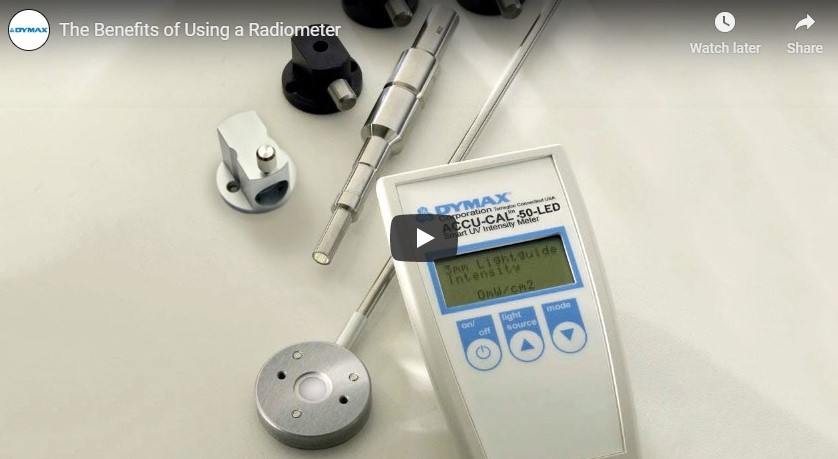Beneficios del radiómetro UV/LED
Un radiómetro es una herramienta importante para controlar un proceso de fotopolimerización. A continuación, se indican algunos de los beneficios asociados a su uso:
Beneficio 1: Mantener un proceso de fotocurado confiable
Bombillas de curado por UV, guías de luz , y los reflectores pueden deteriorarse con el tiempo, lo que hace que llegue menos energía UV a la superficie de curado, lo que da como resultado curados incompletos. A medida que disminuye la energía UV, se deben realizar ajustes en el proceso para mantener la calidad del producto. Puede ser difícil determinar cuándo está disminuyendo la energía UV. Las longitudes de onda de la luz UV son demasiado cortas para ser vistas a simple vista, lo que requiere el uso de un radiómetro para monitorear la intensidad. Los radiómetros pueden medir la intensidad o la energía asociadas con la luz de longitudes de onda específicas y, si se detecta una sistema de fotocurado Proporciona una intensidad superior a la mínima o intensidad de “cambio de bombilla”. Un radiómetro es para un proceso de fotocurado lo que un termómetro es para un proceso de curado en horno.
Beneficio 2: Proporcionar un entorno de trabajo más seguro
También se puede utilizar un radiómetro para determinar si los operadores o transeúntes reciben luz ultravioleta difusa. Esto puede ayudar a garantizar un proceso de fotocurado más seguro y más amigable para los trabajadores. La línea Dymax de Radiómetros ACCU-CAL™ Puede medir la intensidad de la energía dispersa o reflejada hasta un mínimo de 1 mW/cm 2 Se recomienda que los trabajadores no excedan 1 mW/cm 2 de exposición a los rayos UVA.
Beneficio 3: Medir las tasas de transmisión a través de sustratos
Se puede utilizar un radiómetro para medir las tasas de transmisión de distintas longitudes de onda a través de sustratos que a veces absorben distintas frecuencias de energía. Para garantizar un proceso de curado eficaz, es fundamental medir la intensidad de la luz que llega al sitio de curado por debajo de cualquier sustrato intermedio.


